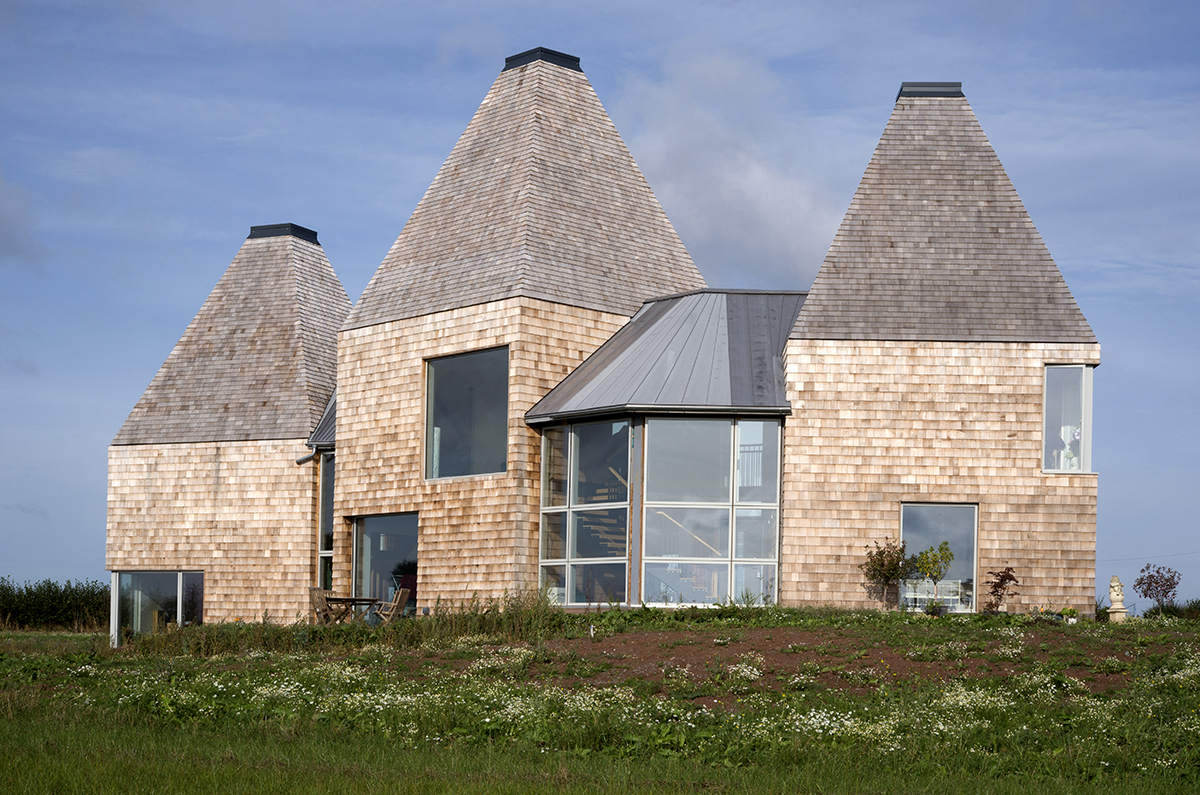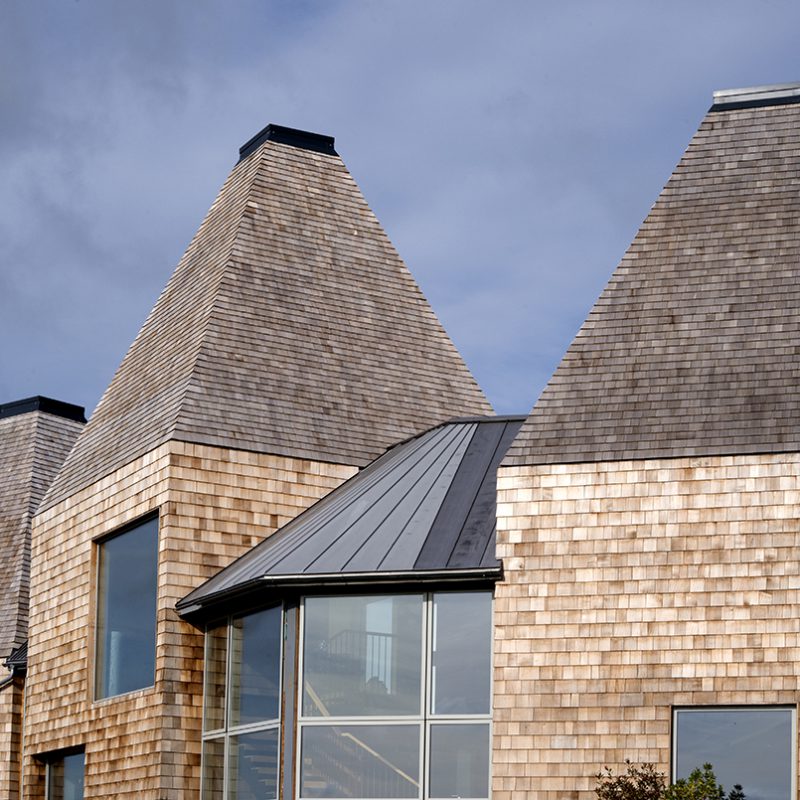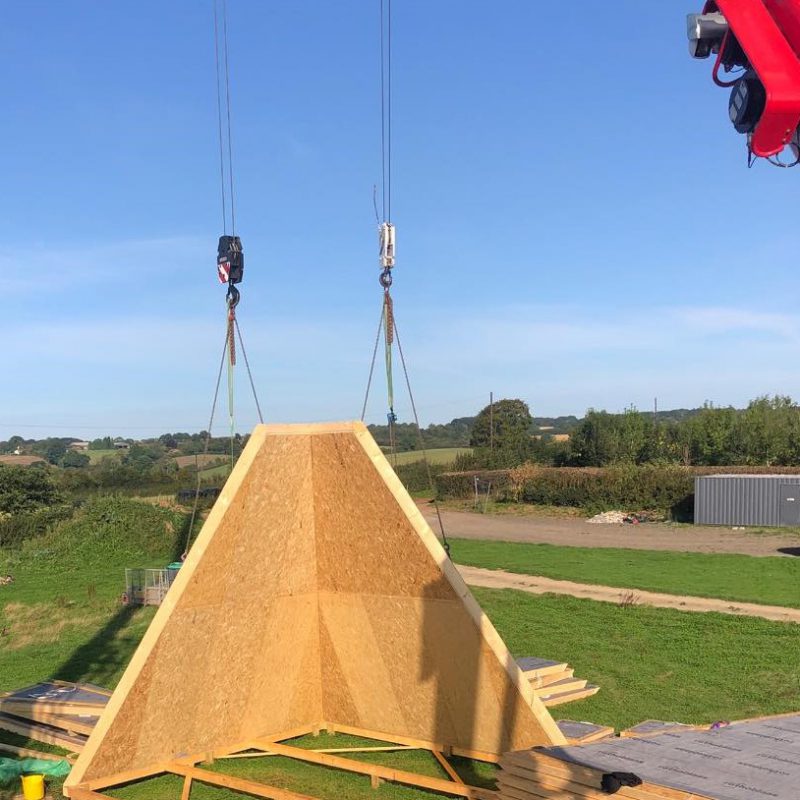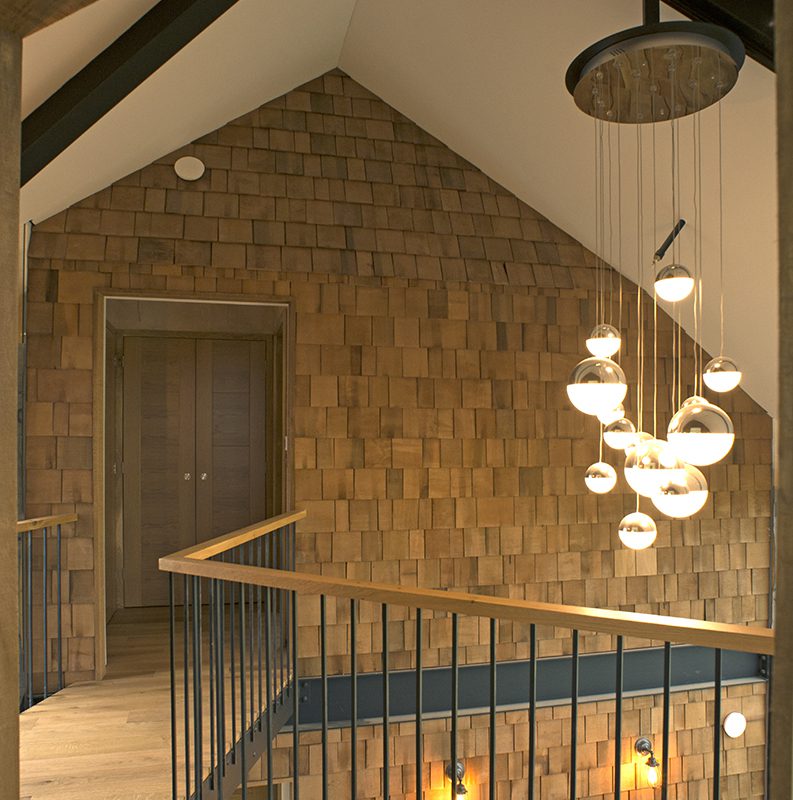
Project: Fuggles Pocket
Company: Paramount Structures
Sector: Self Build
Technology: SIPS



Overview:
Fuggles Pocket is a unique self build detached two storey private residential dwelling named after a well-known local Hop variety and a vernacular design aligned with the original Hop Kilns. The principle frame and envelope was constructed out of Structurally Insulated SIP panels with Glulam structural beams, structural steel, Timber Frame partitions with intermediate Engineered floors in metal web Posi-joists.
This unique Self Build is situated in 20 acres of open countryside in rural Worcestershire. Being a challenging site to gain planning permission on, an exceptionally high quality of design was required to unlock the site. The architect having secured permission for an ambitious design inspired by the hop growing industry of the region the clients then needed to be able to deliver it.
In essence the design consists of three hop kilns set at different levels and angles to each other and ranging in height from 11.7 to 13.1m. In addition to realising the ambitious concept the design needed to meet a number of other criteria:
1. High levels of insulation and airtightness in excess of current Building regulations requirements to ensure the building had high sustainability credentials.
2. Sourced from renewable materials procured locally
3. The homeowners were to live in the caravan throughout the duration of the build so a method that could offer a fast programme was crucial.
4. The site is very exposed (on top of a hill in open countryside with 360-degree views).
The architects were concerned as to the stability and safety of the building during the construction process as the site can get very windy. Their thoughts quickly turned to timber to answer points 1&2 and then to prefabricated timber in order to deal with points 3&4. SIPs seemed to offer the perfect fit for this particular project in this particular location and so it proved to be. The key was creating a legacy home set in a beautiful landscape that had a positive aesthetic and a low carbon impact, both in its build and its subsequent running costs. SIP’s were very much the catalyst in the design process to achieve this.